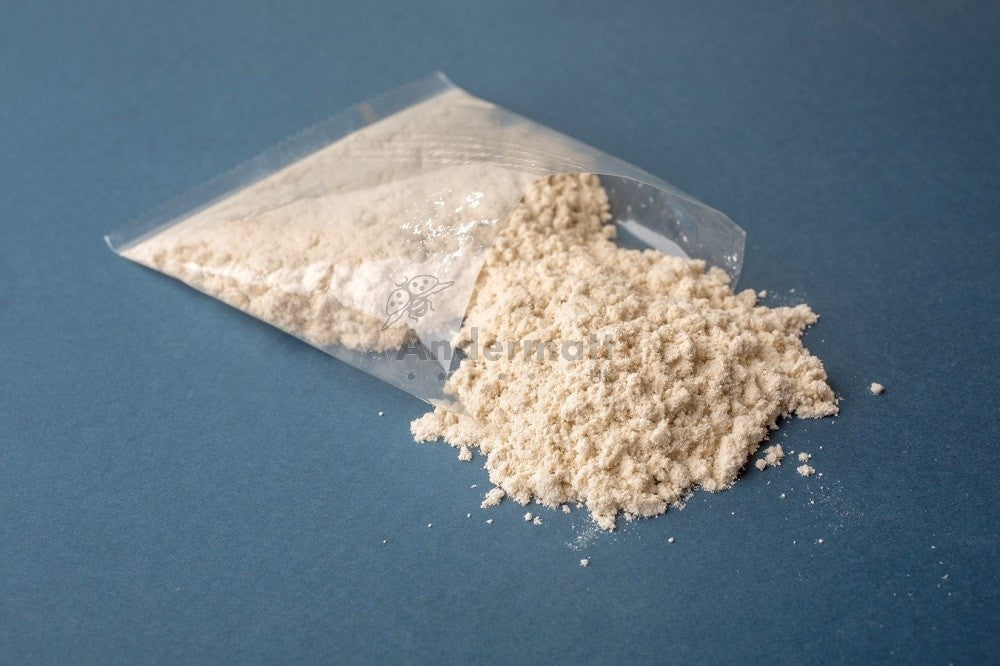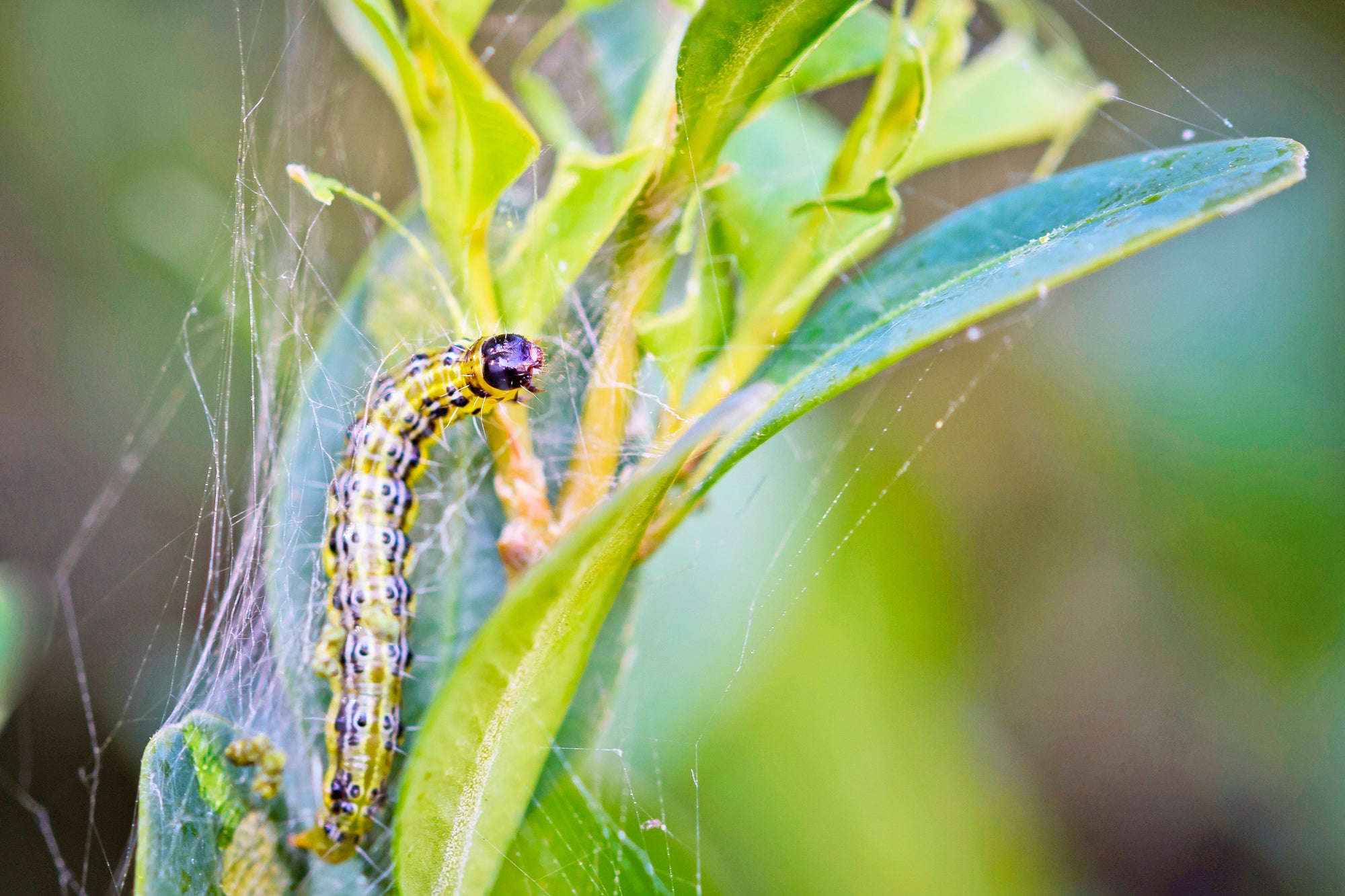Nematodes
Vine weevil
Fungus gnats
Ants
Nematodes

What exactly are nematodes?
Nematodes are one of the most common animals on earth. There are over 20,000 different species of nematodes.

They look like microscopic worms. Technically they’re not worms though (for one, they’re bodies aren’t segmented, and two, they’re much smaller). They have their own phylum, Nematoda.
The 20,000 species are very different. They live in different environments such as soil, fresh water or marine water. Some eat bacteria, funghi or plants, and some are parasites of insects.
Some are natural parasites of specific pest insects like vine weevil, and these are bred for biological control. These are called beneficial nematodes, or entomopathogenic (meaning insect-killing) nematodes.
Are there specific nematodes for different pests?
Yes, different species of nematodes are natural predators of different pests. Some nematode species will predate on several different insect pests, whilst some only attack one pest.
How do nematodes work?
The microscopic worms travel through the soil, hunt down the larvae version of the pest, and kill them.
How are nematodes bred?
Research and testing identifies and isolates the most effective nematode species against a specific target pest. Within the UK, the supply and use of biocontrol products containing EPN is regulated under the Wildlife and Countryside Act 1981.

The nematodes are then reared in state of the art liquid fermentation facilities before being formulated into a product which is able to keep the nematode in an alive but dormant state so that it reaches the grower in the best condition.
Are nematodes dangerous for humans?
A few species out of the 20,000, such as pinworm, are harmful to humans, but these are rare. Most species play a very important role in nutrient cycling and release of nutrients for plant growth.
The nematodes in a biological control product are beneficial, meaning they only kill insects, and not even all insects; they will only be parasites of specific pests. They have no effect on humans, as they cannot interact with humans at all.
Are nematodes harmful to dogs?

Again a few species like pinworm can affect dogs, like they do humans.
The nematodes in your biological control product are definitely not these types of nematodes. They only predate on insects and cannot interact with mammals such as dogs or cats.
Could the nematodes harm my plants?
Some species of nematodes are plant-eating, but the ones in your biological control product are insect-eating. As such they will have no effect on your plant, as they cannot consume any part of the plant.
Is there a minimum number of plants/number of pests you need to make a biological control work?
No, for example fungus gnat nematodes can be applied to a single plant pot with a minimal fungus gnat infestation to stamp it out early.
Can you use nematodes as a preventative measure?
There's no harm in using nematodes at regular intervals, for example in Spring when eggs may be laid or starting to hatch. This may catch an infestation that you don't know about yet early, killing the larvae before they hatch. However, the nematodes will die if there is no prey for them to attack.

Can you keep nematodes alive for longer as a long-term pest control?
Unfortunately not, as the nematodes will die quickly without any prey.
Can you use nematodes on houseplants?
Yes, you certainly can; the nematodes will have even less far to travel to find the larvae.
The idea of live worms in my house/garden freaks me out
They’re no more harmful to you than the live pest already in your house (or garden), and should freak you out a great deal less than inviting a chemical into your house, which is a lot more toxic and longer-lasting.

What are the advantages of using nematodes?
- Natural: organic control, no chemicals or pesticides
- Safe: safe for humans, children, and pets. No gloves needed.
- Environmentally-friendly: only kills the targeted pest, safe for birds, bees, and other beneficial wildlife
- No resistance: pests will not become resistant
- Flexible: works with any plant, no restrictions on flowering plants
- Easy to use: just add water
- Effective:
- Kills the larvae which cause the most damage
- Nematodes seek out the larvae by themselves, unlike sprays which need direct contact
- Eradication more likely as works over a 2 week period where nematodes multiply until all the larvae are dead
What are the disadvantages of using nematodes?
- Must be refrigerated before use. This means they're difficult to sell in places like garden centres, hence why they're usually purchased online. The manufacturer must store the nematodes in a chilled warehouse and ensure prompt delivery so the nematodes don't die in transit.
- Lack of awareness: many gardeners simply aren't aware of nematodes, the benefits of using them, that they're much safer to use than chemical controls, and how to use them correctly.
Vine weevil nematodes

What plants do vine weevil attack?
Vine weevils are common pests that feed on over 200 species of plant, including fuschia and rhododendron, as well as berry fruits, like strawberries and raspberries.

They particularly like those grown in pots or containers.
A full list includes: Arisaema, Aster, Astilbe, Azalea, Begonia, Bergenia, Camellia, Cyclamen, Echinacea, Epimedium, Euonymus, Fuchsia, Heuchera, Hosta, Hydrangea, Busy Lizzie, Kalmia, Lily, Peony, Phlox, Primula, Polyanthus, Raspberry, Rhododendron, Saxifrages, Sedum, Strawberry, Syringa, Yew and Wisteria.
Vine weevil larvae are white grubs found in the soil around your plant that eat the roots. Adult vine weevils are bugs that eat the edges of your leaves. More information can be found here.

Why use nematodes for vine weevil?
Vine weevil damage is mostly from the larvae who eat the roots. Nematodes Heterorhabditis bacteriophora are natural parasites of the larvae and can move through the soil to hunt them down.
How do the nematodes work?
The nematodes kill the vine weevil larvae, which do the most damage to the plant by eating the roots. This also prevents new adult vine weevils from hatching.

The nematodes move through the moist soil like worms. As natural parasites of vine weevil larvae, they hunt down the vine weevil and burrow inside. They reproduce inside the vine weevil, killing it. More nematodes emerge from the vine weevil, and seek out more vine weevil until all are dead.
Once all the vine weevil are dead, the nematodes have nothing to reproduce inside of and also die out.
What are the advantages of using nematodes?
- Natural: organic control, no chemicals or pesticides
- Safe: safe for humans, children, and pets. No gloves needed.
- Environmentally-friendly: only kills the targeted pest, safe for birds, bees, and other beneficial wildlife
- No resistance: pests will not become resistant
- Flexible: works with any plant, no restrictions on flowering plants
- Easy to use: just add water
- Effective:
- Kills the larvae which cause the most damage
- Nematodes seek out the larvae by themselves, unlike sprays which need direct contact
- Eradication more likely as works over a 2 week period where nematodes multiply until all the larvae are dead
Can nematodes be used on houseplants, and in pots and containers?
Yes, simply add to the soil in the pot/container. The nematodes can only travel through/live in moist soil, so they will not leave your plant pots/containers and will die out naturally once the weevil larvae are killed.

How do you use nematodes correctly?
The nematodes come mixed in a beige powder. The nematodes themselves are too tiny to see.

Mix this powder in a 1.5L watering can and water the soil around your plant. Keep the soil moist for two weeks.

Full instructions:
- Store package in fridge (4°C) until use. Do not freeze.
- If applying with a watering can, mix contents of pack in a bucket containing 1.5 L of water and apply evenly to the soil.
- Mix powder in 1.5 L of water and apply evenly to the soil using a watering can or hose end sprayer.
- Water the soil further afterwards to wash the nematodes into the soil
- Keep the soil moist for 2 weeks to help the nematodes work
- Use the entire pack in one go. Do not store opened packs or made-up solutions.
How long does it take to work?
2 weeks
When to use
When vine weevil larvae are present, and soil temperatures are above 12°C for at least a few hours per day (April to October).
Where to buy
From our website: 10m 2 pack or 100m 2 pack. with free next day delivery. Andermatt will courier MightyNem overnight to customers from our UK chilled warehouse. Product contains 50 million beneficial nematodes Heterorhabditis bacteriophora.
From Amazon: 10m 2 pack
How many nematodes do I need?
Our 10m 2 pack treats up to 10 square meters of soil, or 175 pots of 26 cm (7.5 L). If this isn’t enough, we offer a larger 100m 2 pack.
Fungus gnat nematodes

What plants do fungus gnats like?
Fungus gnats are attracted to moist soil and dark, humid environments, so they're a common houseplant pest. They're not actually attracted to the plant but the soil, so they can be found on all kinds of plants.

Overwatering your houseplants, or simply having a lot of them, can wreak havoc to your indoor space.
Although they don't cause much damage, having tiny flies hovering around you is extremely irritating and they will multiply quickly without treatment.
You can find out more about fungus gnats here.
Why use nematodes for fungus gnats?
Nematodes Steinernema feltiae are natural parasites of the fungus gnat larvae, which hide in your soil and hatch into new flies. They can move through the soil to hunt them down, and multiply by themselves until all the larvae are dead.
We recommend using mini yellow sticky traps in combination with nematodes. Mini yellow sticky traps catch and kill the adult gnats, and so using this combination deals with both life stages for a higher chance of complete eradication.
How do the nematodes work?
The nematodes kill the fungus gnat larvae, which are hiding in the soil of your plants and hatching into more gnats. This prevents new flies from hatching and breaks the lifecycle.
The nematodes move through the moist soil like worms. As natural parasites of fungus gnat larvae, they hunt down the larvae and burrow inside. They reproduce inside the larvae, killing it. More nematodes emerge from the larvae, and seek out more larvae until all are dead and no more fungus gnats can hatch.
Once all the fungus gnat larvae are dead, the nematodes have nothing to reproduce inside of and also die out.
The yellow sticky traps attract the adult gnats to the surface. Once on the sticky surface, they get trapped and die. This also allows you to monitor the infestation and catch any subsequent infestations early.

Andermatt's sticky traps use a double combination of bright yellow card and black line patterns to really attract the gnats. They're also plastic-free, with discete wooden stands, and fully compostable after use.
What are the advantages of using nematodes?
- Natural: organic control, no chemicals or pesticides
- Safe: safe for humans, children, and pets. No gloves needed.
- Environmentally-friendly: only kills the targeted pest, safe for birds, bees, and other beneficial wildlife
- No resistance: pests will not become resistant
- Flexible: works with any plant, no restrictions on flowering plants
- Easy to use: just add water
- Effective:
- Kills the larvae which cause the most damage
- Nematodes seek out the larvae by themselves, unlike sprays which need direct contact
- Eradication more likely as works over a 2 week period where nematodes multiply until all the larvae are dead
Can nematodes be used on houseplants, and in pots and containers?
Yes, simply add to the soil in the pot/container. The nematodes can only travel through/live in moist soil, so they will not have far to travel. Nor will they leave your plant pots/containers. They will die out naturally once the fungus gnat larvae are killed.
Can these nematodes be used outside in my garden?
Yes, nematodes are suitable for any kind of soil, whether in a pot or garden. Simply add to the soil around the affected plants. As long as you regularly water the soil over the 2 week treatment period as per the instructions, the nematodes will be able to travel through the soil.

How to use nematodes correctly
The nematodes come mixed in a beige powder. The nematodes themselves are too tiny to see.

Mix this powder in a 1.5L watering can and water the soil around your plant. Keep the soil moist for two weeks.

For the mini yellow sticky traps, simply place them in the soil around your plants using the wooden stand holder provided.

Full instructions:
Nematodes
- Store package in fridge (4°C) until use. Do not freeze.
- If applying with a watering can, mix contents of pack in a bucket containing 1.5 L of water and apply evenly to the soil.
- Mix powder in 1.5 L of water and apply evenly to the soil using a watering can or hose end sprayer.
- Water the soil further afterwards to wash the nematodes into the soil
- Keep the soil moist for 2 weeks to help the nematodes work
- Use the entire pack in one go. Do not store opened packs or made-up solutions.
Mini yellow sticky traps
- Peel off the film covering the sticky trap.
- Thread the wooden stand holder through the two holes in the yellow card
- Place the stand holder into the soil in a pot, keeping the sticky card a few centimetres above the ground.
- Ensure the sticky card is clear from plant leaves to allow insects to see it.
- Replace the sticky card when full of trapped insects.
- Sticky cards and stand holders are compostable after use.
How long does it take to work?
2 weeks
When to use
When soil temperatures are above 10°C for at least a few hours per day (April to October).
Where to buy
From our website: 10m 2 pack or 100m 2 pack. with free next day delivery. Andermatt will courier MightyNem overnight to customers from our UK chilled warehouse. Product contains 10 million beneficial nematodes Steinernema feltiae.
How many nematodes do I need?
We offer a 10m 2 kit containing both the nematodes and yellow sticky traps, or a 20m 2 pack size depending on the area you need to treat. You can also purchase only the nematodes here.
Nematodes for ants

What attracts ants?
In houses, ants are attracted to crumbs of food or food left out, particularly fruit and anything containing sugar. They may also be looking for places to nest.

In gardens ants feed on insects and substances extreted by insects like aphids. They can disturb plant roots and lawns.
Why use nematodes for ants?
Nematodes offer a compeletely natural, organic solution for getting rid of ants. Steinernema feltiae nematodes are natural predators of ants and ants will move their nest once predators move in. Nematodes therefore offer an easy solution to force ants to move their nests and get rid of the source.

How do the nematodes work?
Steinernema feltiae are naturally occurring micro-scopic worms and predators of ants. Colonies of ants will not tolerate these predators in their nests.
Social insects, such as ants, constantly clean nest areas removing predators and parasites. However, if the number of predators becomes too high they move their nest. Drenching a nest with MightyNem No Ants introduces a high number of nematodes to a nest forcing the ants to move.

What are the advantages of using nematodes?
- Natural: organic control, no chemicals or pesticides
- Safe: safe for humans, children, and pets. No gloves needed.
- Environmentally-friendly: only kills the targeted pest, safe for birds, bees, and other beneficial wildlife
- No resistance: pests will not become resistant
- Flexible: works with any plant, no restrictions on flowering plants
- Easy to use: just add water
- Effective: Kills at the early larvae stage preventing hatching; nematodes can hunt the larvae by themselves; nematodes multiply until all the larvae are dead
How to use
The nematodes come mixed in a beige powder. The nematodes themselves are too tiny to see.

Mix this powder in a 1.5L watering can and water the area, preferably the ants nest. Keep the soil moist for two weeks.

Full instructions:
- Store package in fridge (4°C) until use. Do not freeze.
- If applying with a watering can, mix contents of pack in a bucket containing 1.5 L of water and apply evenly to the soil.
- Mix powder in 1.5 L of water and apply evenly to the area to be treated using a watering can or hose end sprayer.
- Best results are achieved when the nematodes are applied directly to the ant nests and washed down the tunnels deep into the nest. Repeat the above two steps until all product is used.
- Water the soil further afterwards to wash the nematodes into the nests
- Keep the soil moist for 2 weeks to help the nematodes work
- Use the entire pack in one go. Do not store opened packs or made-up solutions.
How long does it take to work?
2 weeks
When to use
When soil temperatures are above 10°C for at least a few hours per day (April to October).
Where to buy
From our website: 10m 2 pack. Andermatt will courier MightyNem overnight to customers from our UK chilled warehouse. Product contains 10 million beneficial nematodes Steinernema feltiae.
How many nematodes do I need?
Our 10m 2 pack treats up to 10 square meters of soil, or 10 ants nests.



